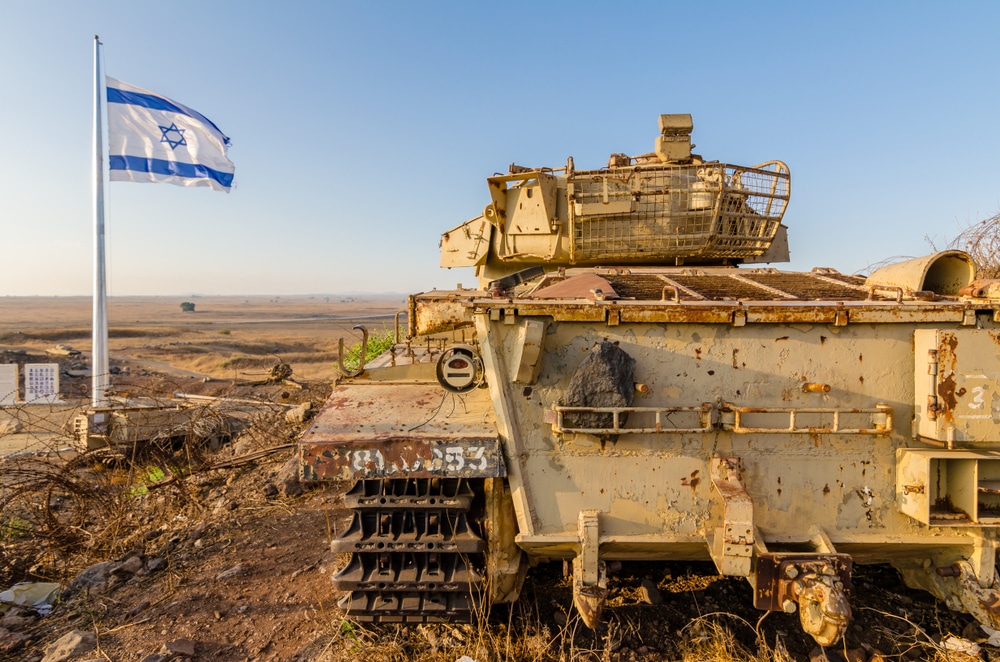In mid-June, the Israel Defense Forces completed a major two-week war exercise, dubbed “Firm Hand,” which simulated a multi-arena war starting with Hezbollah and Lebanon and spreading to other locations, including Iran.
The Israeli Air Force played a key role in the exercise, reflecting its centrality as Israel’s strategic arm. In May, the IAF sent, for the first time, F-16 fighter aircraft to Cyprus as part of the “Blue Sun” exercise, which simulated war with Hezbollah in Lebanon.
According to PNW, The drill also saw Israeli intelligence-gathering jets, C-130 transport helicopters, Apache gunships, and special forces on the ground.
The IAF, which is due to have two full squadrons of F-35 fifth-generation jets by 2024, and is due to receive a third squadron in the coming years, is preparing itself for the plentiful security challenges of the 21st century Middle East.
Chief among these is the attempt of the Iranian-led axis to surround Israel with a “ring of fire,” and plant missile and rocket bases in civilian areas all around the Jewish state.
In any future full-scale regional war, the IAF will have to be able to both deal with those threats and tackle Iranian nuclear sites and missile bases thousands of kilometers from Israel– all at the same time.
“The IAF has always been precise about being versatile, both in the quantity of force it uses and the way that it adjusts this force to various missions,” former IAF commander Maj.-Gen. Eitan Ben-Eliyahu (res.) told JNS.
“The pilots train in line with every potential arena. The arenas are prioritized in a case-by-case manner, according to conditions,” Ben-Eliyahu explained.
IDF Brig. Gen. (res.) Professor Jacob Nagel, a senior fellow at the Foundation for Defense of Democracies who served as acting national security adviser during a previous administration of Prime Minister Benjamin Netanyahu and the former head of Israel’s National Security Council, said that the IAF’s role will be critical, alongside that of intelligence, in preparing for a multi-front war.
“Already back in the defense doctrine formulated by David Ben-Gurion, and as part of its three pillars of deterrence, early warning [intelligence] and decisive victory [after which the defense pillar was added], the air force had a main role in deterrence and decisive victory,” said Nagel.
The IAF’s Air Defense Command today plays a key role in defense, Nagel noted, and the IAF is also tasked with protecting national borders until reserves are called up.
In 2017 and 2018, then-Prime Minister Netanyahu drew up a revised defense doctrine, which states that the IDF will strike any who strike Israel, but also that it will target those behind such attacks–meaning Iran, Nagel added.
“Iran is the one pushing with full force for a multi-arena conflict. The Iranians have to understand that they won’t stay outside of this.
That will create additional and important roles for the IAF, in the depth of enemy territory and in nearer arenas, but others will also be involved–intelligence, cyber, precise missiles, special forces and more,” he said.
Furthermore, ground forces will have an important role in a multi-arena war, Nagel argued, but mainly of the type of ground forces currently being built.
These, he said, are designed to deal with deceptively empty battlefields, enemy forces that employ robots, stand-off (long-range) and stand-in (weapons that can be deployed as part of raids into enemy territory), strikes in the enemy’s depth, and more.










